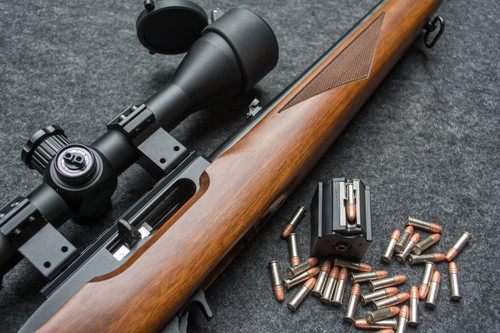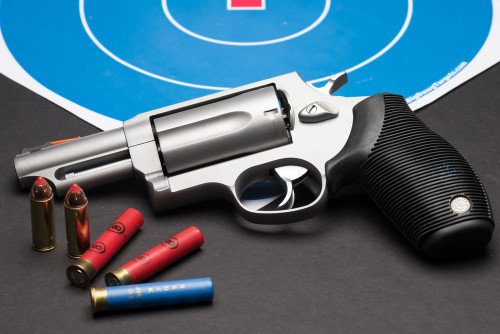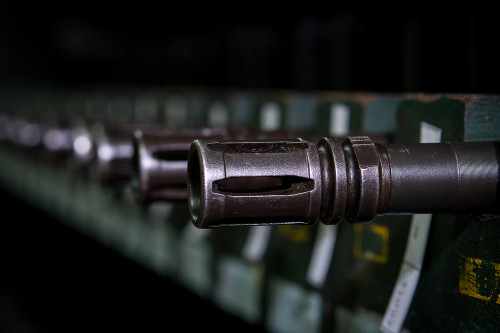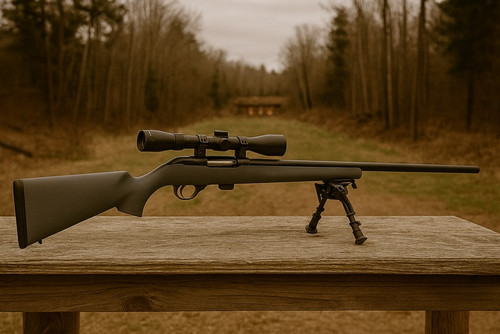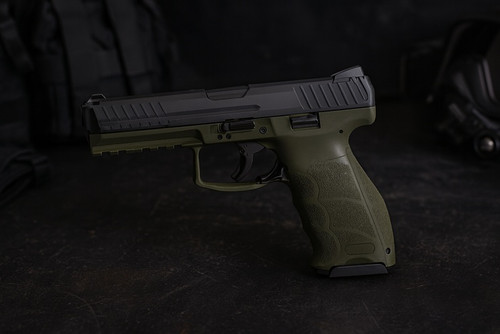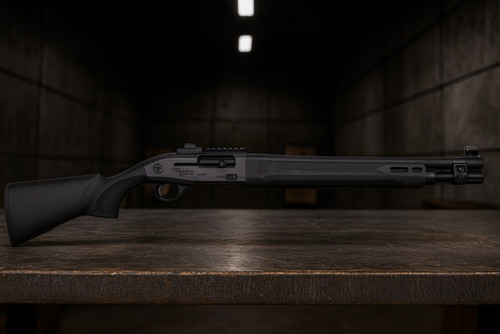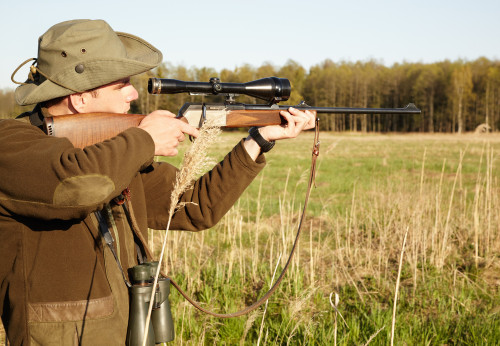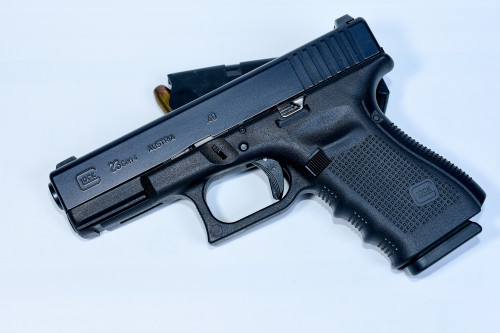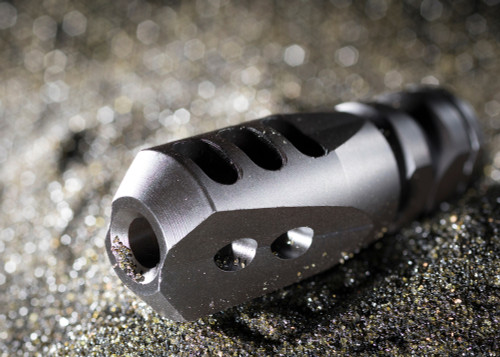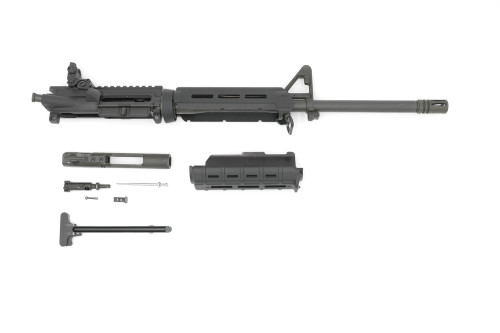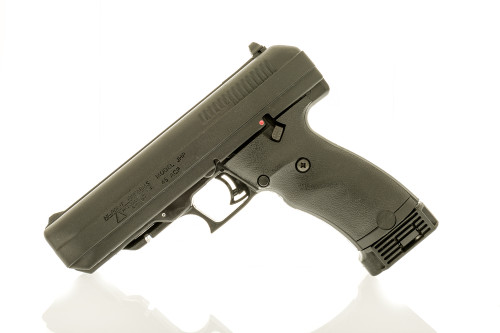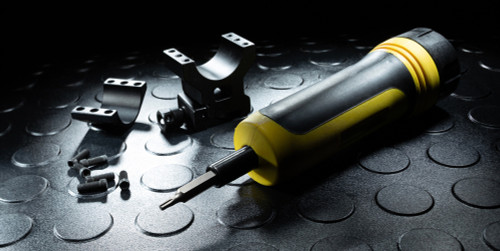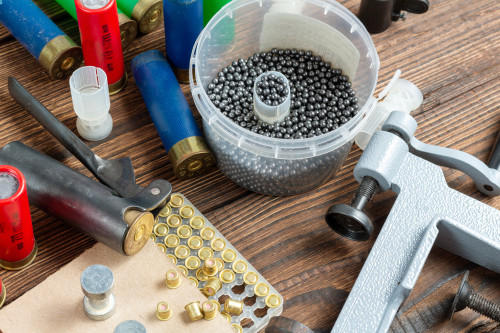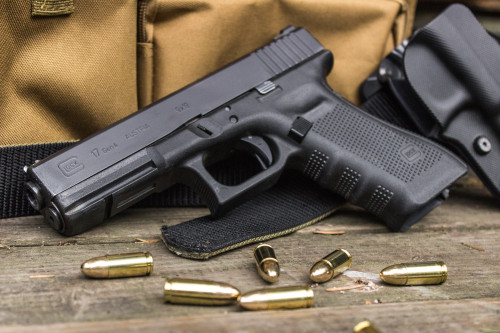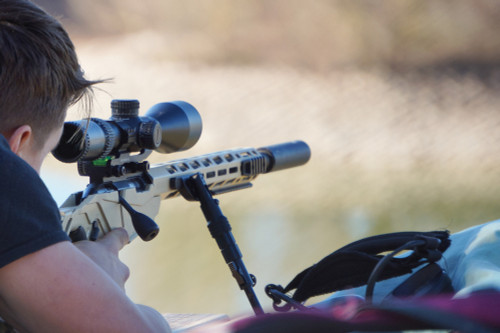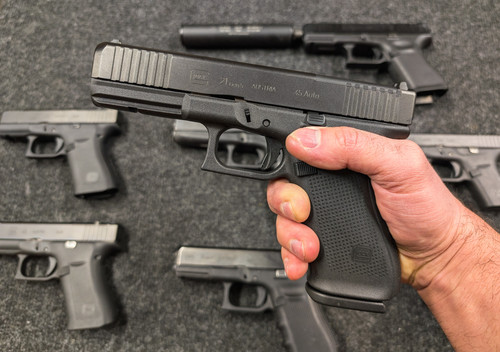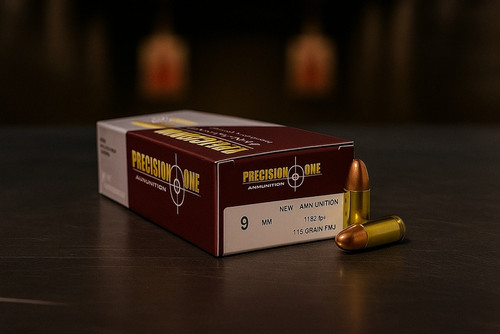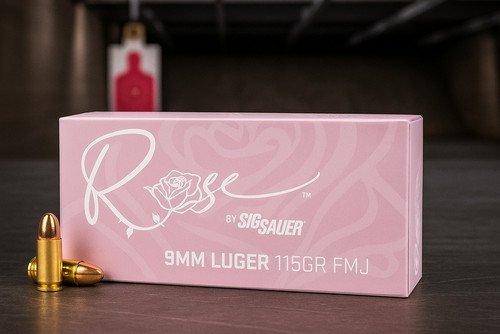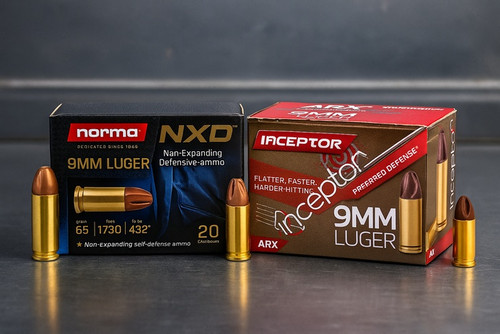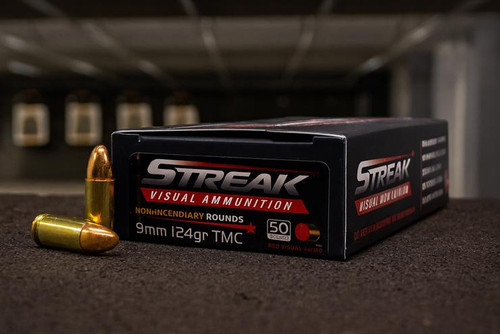Quick Answer
The Hi-Point JHP .45 is a budget-friendly, blowback-operated pistol that many call ugly yet it works. It runs most ammo types, carries a lifetime, transferable warranty, and is rated for +P ammunition by the manufacturer. . Big downsides: a heavy slide, a mushy trigger, awkward take-down, and clunky ergonomics. If you need a sub-$200 nightstand gun that fires when you pull the trigger, it does the job. If you can pay more, stronger choices are on the table.
Key Takeaways
- Works with most ammo, though some brands can cause feeding hiccups.
- Heavy blowback slide tames recoil, but it hurts balance.
- Disassembly needs tools and real effort.
- +P capable per the maker’s specs.
- Few meaningful aftermarket upgrades exist.
- Lifetime warranty follows the gun to the next owner.
The Hi-Point .45 ACP fills a rare slot. It is one of the least-expensive centerfire pistols you can buy, and it is also one of the most mocked. Tight budgets still need home defense, so the question becomes simple. Does this heavy, industrial-looking pistol deliver where it counts? Many say no. Many say yes. The debate never ends, and that mix gives this budget .45 both fans and critics.
What Is the Hi-Point JHP .45 ACP?
The Hi-Point JHP .45 is an American-made, budget-oriented pistol built to cut cost at every step. Materials and methods aim to keep the shelf price low, often under $150 at common retailers.
This full-size, polymer-framed pistol uses a blowback operating system instead of the locked-breech setup you see in most modern .45s. The slide is a zinc-alloy (Zamak-3) casting whose mass enables the straight-blowback system to run with .45 ACP.
It weighs 44.8 ounces (manufacturer spec).. That is about 2.8 pounds, and it feels like a brick. It will not win a beauty prize, but the goal here is function over form. Many buyers call it “cheap but runs” for tight budgets. The JHP also ships with a lifetime warranty that follows the gun, not just the first owner, which is rare at this price.
How Does the Blowback Design Affect Shootability?
Most modern .45 ACP pistols use a locked-breech system. The Hi-Point uses a straight-blowback design with a fixed, frame-mounted barrel.
In this system, only the massive weight of the slide and the recoil spring resist the rearward force of firing. This creates a unique shooting experience. Instead of the sharp "pop" and muzzle flip you might expect from a .45, you get more of a heavy "KA-CHUNK" sensation as the hefty slide cycles back and forth.
The good news? This massive slide actually helps tame felt recoil. The bad news? It makes the gun extremely top-heavy and unbalanced. For new shooters, this can be both a blessing (less muzzle flip) and a curse (awkward handling).
Reliability: Does It Actually Run?
Despite its budget nature, the Hi-Point .45 has developed a reputation for functioning with various ammunition types. Tests with different loads show it generally runs well with standard ball ammo and many hollow points.
However, it's not perfect. Some users report specific ammunition preferences. For example, Fiocchi ammo may cause multiple failures to feed per magazine, and Remington UMC can have difficulty chambering the first round, though it runs fine afterward. Other brands like Federal, Winchester, and Blazer Brass typically function without issues.
The magazine itself might be the weakest link in the reliability chain. If you experience feeding problems, magazine-related fixes like bending the feed lips slightly or replacing the magazine spring can improve function. At this price point, expect some tweaking may be necessary.
What Groups Should You Expect?
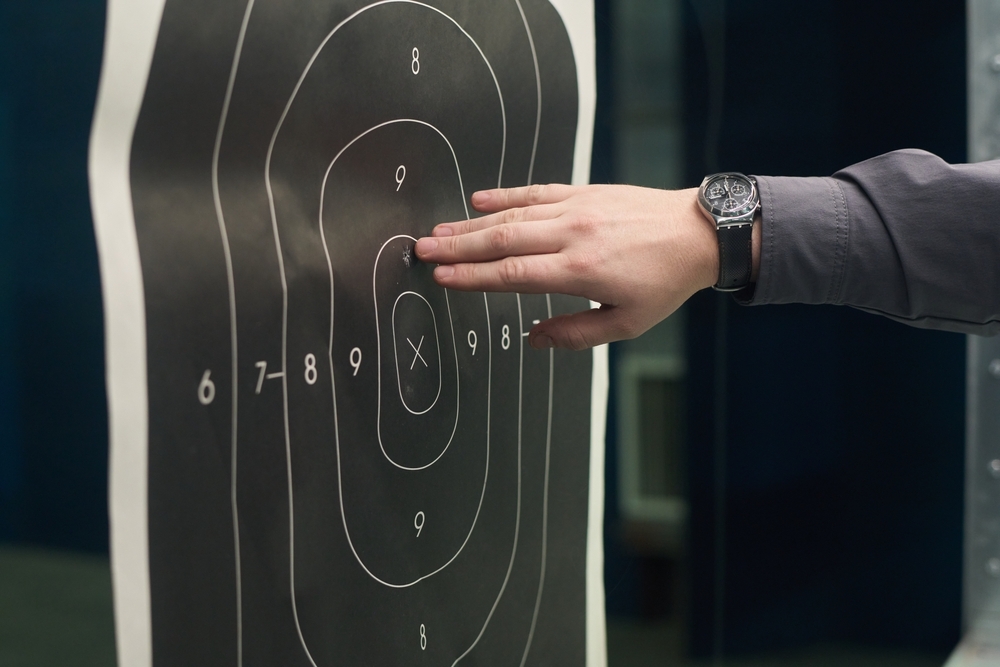
The Hi-Point .45 has a fixed barrel, which can help accuracy. In real use, it shoots fine at close, defensive ranges. You will not win matches with it, but it gets the job done at 7–15 yards.
The trigger is the hard part. One reviewer called it “literally worse than a Nerf gun.” It feels long, heavy, and spongy. That makes tight groups tough. You will need practice to stay steady and repeat your pull.
The sights are the bright spot. You get a yellow front dot and a red, fully adjustable rear (windage & elevation); Hi-Point also includes an alternate rear peep (ghost-ring) sight in the box.
How Does It Fit the Hand?
Put bluntly, ergonomics are not the Hi-Point's strong suit. The combination of a thick grip and extremely top-heavy balance creates an awkward shooting experience. The gun feels unnatural in hand compared to more refined designs.
The controls are a mixed bag. The magazine release is smooth and low-profile. That helps prevent bumps, yet it also slows quick use. Ejection is weak on many mags, so you may need to strip them from the well by hand.
After the last round, the slide stays open—good news. But unlike most modern pistols, there is no external slide-release lever; after lock-back, you slightly retract and release the slide to chamber a round.. To load from a fresh magazine, pull the slide slightly to the rear and let it go. The method works, and it adds a bit of time to your reload.
People with smaller hands or limited grip strength may struggle with this gun because of its size and control layout.
Safety & Features: What's Built In?
The Hi-Point .45 includes several safety features:
- A frame-mounted manual safety that doubles as a slide lock
- A magazine-disconnect safety prevents firing without a magazine inserted, and the pistol is designed with internal drop-safety features; however, it does not use a separate firing-pin block. (For context, some 1911s—e.g., “Series 70”—also lack a firing-pin block, while “Series 80” models include one; 1911s are hammer-fired, not striker-fired.)
- A viewing port that allows you to check if the chamber is loaded
- Internal drop safeties to prevent accidental discharge if dropped
The gun also features a last-round hold-open function. It tells you when the magazine is empty. The thumb safety is easy to use. But some owners may find its dual role as a slide lock confusing at first.
One safety concern some critics note is the lack of a firing pin block safety mechanism in the striker-fired design. Some see this as less safe for carry in Condition One (loaded chamber, cocked hammer). Even so, it’s worth noting that other popular firearms like the 1911 share similar design traits.
Can You Maintain Field Stripping Easily?
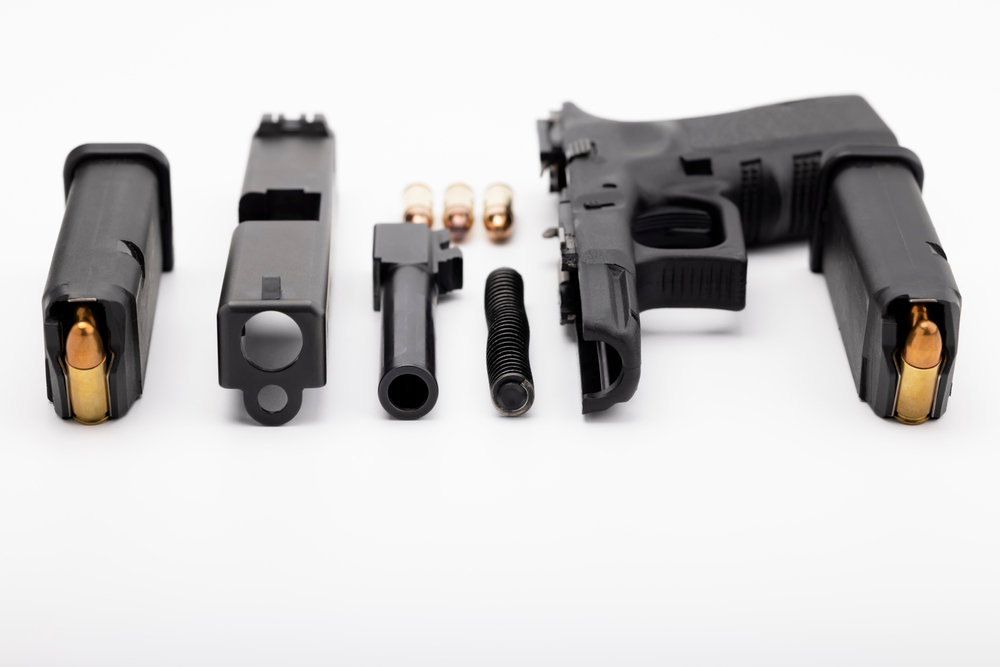
Field stripping requires tools (punch/driver) to remove the takedown pin per the factory procedure; it is not a toolless design.
The steps go like this. Lock the slide back. Use a punch and hammer to drive out a pin. Let the slide go forward. Move it back a touch, then lift it off. Reassembly is the reverse. It’s cumbersome, time-consuming, and not range-friendly.
Once it’s apart, cleaning is simple. The fixed barrel and plain layout leave few tight spots to scrub. Even so, the awkward break-down may push you to put off regular maintenance.
Aftermarket parts exist to replace the takedown pin with a screw. That helps a bit. But you still need a hex wrench for disassembly—so it’s not tool-free like most competitors.
Ammo Compatibility: What Feeds Best?
The Hi-Point .45 handles standard full metal jacket (FMJ) ammunition well, with some brand preferences as noted earlier. Hollow point performance varies by brand and bullet design, though many defensive loads do function properly.
One notable advantage is that Hi-Point rates this pistol for +P ammunition—higher pressure loads that can exceed the capabilities of some budget firearms. The massive slide and simple blowback design can handle these higher pressures, though the shooter may find the increased recoil uncomfortable.
If you plan to use this gun for home defense, test your chosen defensive ammunition thoroughly. Some hollow points may feed better than others, and finding a reliable load is essential for a defensive firearm.

Federal Premium HST 45 ACP 230gr JHP
$34.21
at Pro Armory
Prices accurate at time of writing
Upgrades & Accessories
The aftermarket support for Hi-Points is extremely limited compared to mainstream pistols. Available upgrades include:
- Cosmetic wraps and finishes (including the infamous "$100 bill" design)
- A milled aluminum rear sight
- Wood grips
- Aftermarket magazine and feed-system mods exist, but 1911-mag conversions are niche/DIY and not mainstream supported parts—plan on using the factory 9-round Hi-Point magazines.
- Milled aluminum trigger
- Stainless steel guide rod
- Short accessory rail on the frame with limited compatibility for standard lights; dedicated trigger-guard lasers made for Hi-Point pistols (e.g., LaserLyte TGL) are common aftermarket options.
Don't expect to transform this into a competition gun or significantly improve its ergonomics. The platform has inherent limitations that upgrades can't overcome. If extensive customization is important to you, this isn't your gun.
Where Does Cost & Value Fit in the Market?

MSRP is $199 (factory), and street prices often dip below that depending on retailer and timing.
Total ownership costs remain low since magazines are inexpensive (though you may want spares given potential feeding issues). The lifetime warranty adds value. It also covers repairs regardless of whether you're the original owner.
The value proposition is straightforward: you get a functional, if crude, .45 ACP pistol at an extremely low price. It's not refined, pretty, or particularly pleasant to shoot, but it does go bang when you pull the trigger.
By the Numbers
| Factor | Rating (1–5) | Notes |
|---|---|---|
| Reliability | 4 | Runs with most ammo; some brand preferences reported. |
| Accuracy | 3 | Decent for defensive use; limited by trigger characteristics. |
| Ergonomics | 1 | Top-heavy, unbalanced design with a thick grip that many find uncomfortable. |
| Disassembly | 2 | Requires tools and significant effort compared with simpler designs. |
| Features / Safety | 3.5 | Good safety features overall but lacks a convenient slide release. |
| Customization | 1 | Few meaningful upgrade or aftermarket options available. |
| Value | 4 | Unbeatable price for a functioning .45 — strong value proposition. |
Who Should Buy the Hi-Point .45 and Who Shouldn't?
This gun is best for:
- First-time gun buyers on extremely tight budgets
- Those needing basic home defense who can't afford more
- People who won't shoot often or extensively train
- Buyers who value simple function over refinement
Not ideal for:
- Anyone planning to carry concealed (it's too heavy and bulky)
- Those who want to upgrade or customize extensively
- Shooters who prioritize ergonomics and trigger quality
- People who can save up a bit more for a better experience
Alternatives to Consider at Higher Budgets
If you can save an extra $100–$200, more doors open. You get pistols with better ergonomics, cleaner triggers, and a nicer shooting feel. Even entry-level models from major makers offer more refined designs and better controls.
The jump from a sub-$200 Hi-Point to a $300–$350 pistol is large. The added cost buys stronger materials, more comfortable ergonomics, easier care, and a much better trigger. If you can stretch the budget, wait a bit, then upgrade. The better experience is worth the time and the extra cash.
Verdict: Is the Hi-Point .45 ACP Worth It?
The Hi-Point .45 ACP hits its goal. It gives you a working firearm at the lowest price point. It is not polished, not refined, and not very fun to shoot, but it does work.
If your situation is truly "this or nothing" due to budget constraints, then yes, it's worth it. The Hi-Point will provide basic home defense capability when you need it. The lifetime warranty adds peace of mind that if something breaks, it will be fixed.
For everyone else who can save a bit longer or spend a bit more, the answer is different. The improvements in ergonomics, trigger quality, and overall shooting experience make the step up to even entry-level models from major manufacturers well worth the additional cost.
Want to see how the Hi-Point compares to other .45s you might consider? Read our full buyer’s guide: Top .45 ACP Handguns for 2025.
Frequently Asked Questions (FAQ)
Is the Hi-Point .45 ACP reliable for home defense?
Yes, with proper ammunition testing. Find which loads it feeds consistently and stick with those. The gun has proven capable of digesting hundreds of rounds without cleaning when fed compatible ammunition.
Can the Hi-Point .45 safely shoot +P ammo?
Yes, the manufacturer rates it for +P ammunition. The heavy slide and blowback design can handle higher pressures, though expect increased felt recoil.
Why is the slide so large and heavy?
The blowback design requires mass to safely control the powerful .45 ACP cartridge. Without a locking mechanism, the slide's weight is what keeps the action closed until pressures drop to safe levels.
How hard is it to field strip the Hi-Point .45?
Very difficult compared to most modern pistols. You'll need a punch, hammer, and significant effort to remove the takedown pin. This makes regular cleaning and maintenance more challenging.
What ammo types feed best in a blowback .45?
Standard FMJ ammunition from quality manufacturers typically runs best. Some hollow points work well, but testing is essential to find compatible defensive loads.
Does it have a slide release?
No. When the slide locks back on empty, you must pull it rearward slightly and then release it to chamber a new round after inserting a fresh magazine.
Is the magazine disconnect a problem for training?
It can be for some training protocols, as the gun won't fire without a magazine inserted. This affects certain malfunction drills but adds a layer of safety for novice users.
Are there worthwhile upgrades?
Few significant performance upgrades exist. Some cosmetic changes and minor improvements like better sights are available, but don't expect to transform the fundamental shooting experience.
What are sensible alternatives if I can spend more?
For $100-200 more, entry-level models from major manufacturers offer vastly improved ergonomics, triggers, and overall quality. The performance difference justifies saving longer if possible.
About the Author
This article was written by the Pro Armory writing team using current research. Sources include the Journal of Military Science, Firearms News, and the National Shooting Sports Foundation. We also used trusted guidance from official defense publications and firearm authorities such as the ATF, NRA, and manufacturer manuals.
Disclaimer: The information in this article is for education only and is not legal advice. Laws on firearms vary by state and by city. Always check your local laws and rules before buying or using any firearm. Use this information with care. All firearms must be handled under established safety protocols.




 Pro Armory Editorial Team
Pro Armory Editorial Team




